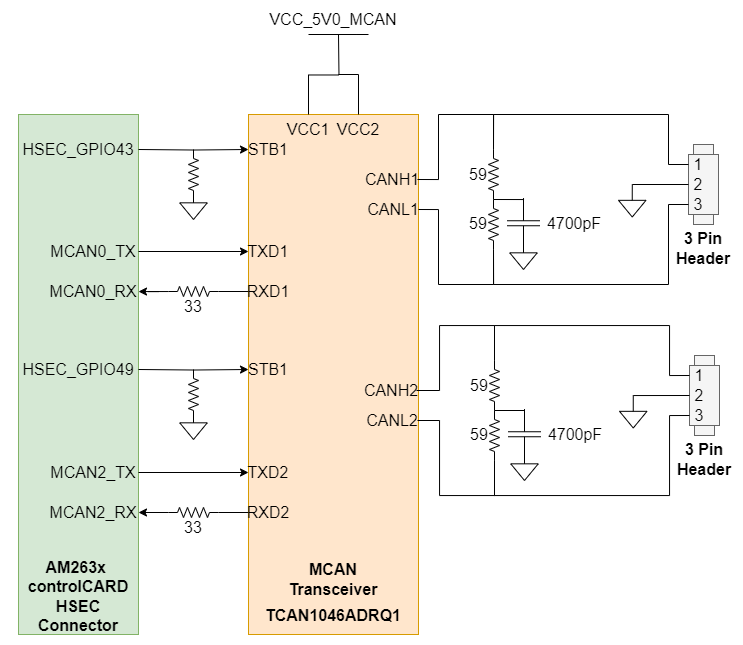SPRUJ73 December 2023
2.5.3 MCAN
The AM263x controlCARD Docking Station is equipped with a single dual MCAN transceiver (TCAN1046A-Q1) that is connected to the MCAN0 and MCAN2 interfaces of the AM263x SoC. The MCAN0 and MCAN2 interfaces of the AM263x SoC are mapped directly to the AM263x controlCARD HSEC connector.
 Figure 2-9 MCAN Transceiver
Figure 2-9 MCAN TransceiverThe MCAN transceiver has two power inputs, VCC1 is the 5V supply voltage for channel 1 of the transceiver and VCC2 is the 5V supply voltage for channel 2 of the transceiver. The AM263x SoC MCAN0 data transmit data input is mapped to TXD1 of the transceiver and the SoC MCAN2 data transmit data input is mapped to TXD2 of the transceiver. The CAN receive data output of the transceiver RXD1 is mapped to the MCAN0 RX signal of the AM263x SoC and the data output of the transceiver RXD2 is mapped to the MCAN2 RX signal of the AM263x SoC. Both RXD1 and RXD2 nets have a series termination resistor close to the transceiver.
The standby control signals for each channel are GPIO signals sourced from the AM263x SoC and AM263x controlCARD HSEC connector, GPIO43 for STB1 and GPIO49 for STB2. While the MCAN transceiver's STB inputs have an internal pull-up, the external pull-down resistor defaults the transceiver for normal operation.
The system has a 120Ω split termination on the CANH1/CANH2 and CANL1/CANL2 signals to improve EMI performance. Split termination improves the electromagnetic emissions behavior of the network by eliminating fluctuations in the bus common-mode voltages at the start and end of message transmissions.
The low and high level CAN bus I/O lines for each channel are terminated to a three pin header.